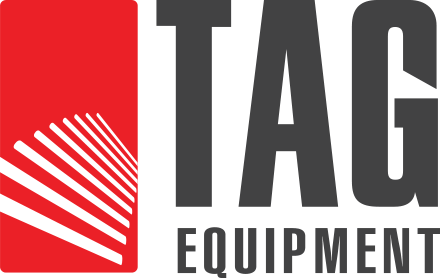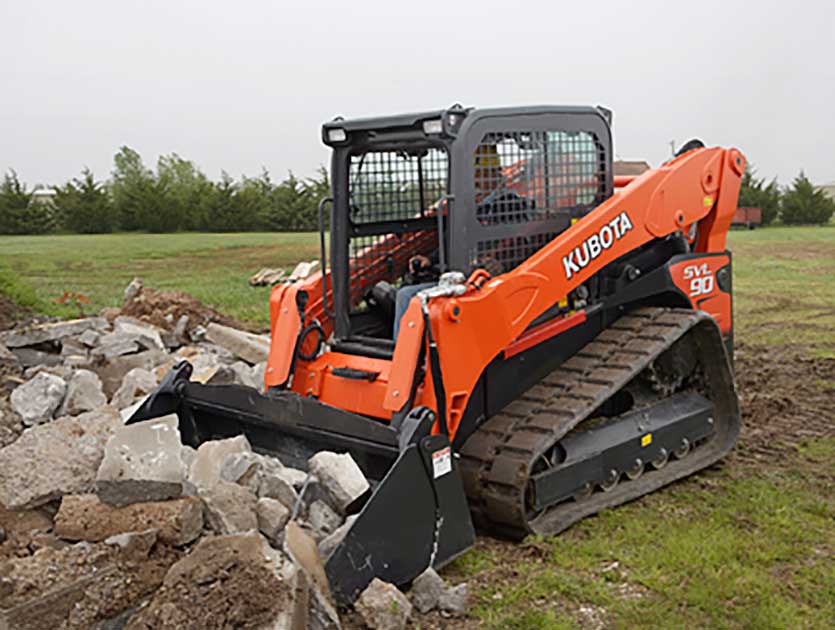Before investing in a Kubota skid steer, it’s essential to understand the factors that will impact performance, cost-effectiveness, and jobsite fit. Kubota is known for its durability, power, and attachment flexibility—and this guide will walk you through frame size, lift type, torque, attachment needs, and track vs tire choices so you can confidently match the right model to your work requirements. Whether you’re a contractor, landscaper, or equipment operator, this information will help you make a more informed, cost-efficient decision.
Why Choose a Kubota Skid Steer Loader?
Kubota skid steers are a top choice among Canadian contractors for their blend of reliability, compact performance, and attachment compatibility. These machines are engineered with user-focused features that improve productivity in harsh Canadian climates and versatile jobsite conditions.
Here’s why Kubota stands out:
- Durable build quality – Kubota machines are designed for long service life, with reinforced frames, sealed electrical systems, and robust hydraulics.
- Compact strength – Even small- and mid-frame models deliver impressive lifting capacities without compromising maneuverability.
- Attachment compatibility – Kubota loaders are built with universal quick-attach systems, making it easy to switch between tools like augers, planers, buckets, and forks.
- Comfort and control – Cab ergonomics, visibility, and joystick control make Kubota machines operator-friendly for long shifts.
- All-weather performance – With models suited for snow, mud, gravel, and paved environments, they are an all-season investment.
Trusted by equipment professionals across Canada, Kubota is a name you can rely on for durability and versatility. Learn more about Kubota equipment here.
Frame Size and Jobsite Compatibility
Selecting the right frame size is one of the most important steps when choosing a skid steer. Kubota offers a range of models that fit different jobsite requirements and transportation needs:
Small Frame (e.g., Kubota SSV65)
- Best for compact urban sites or residential landscaping
- Offers excellent maneuverability and fuel efficiency
- Easier to tow with smaller trailers or utility trucks
- Limitations in lift height and hydraulic power
Mid-Size Frame (e.g., Kubota SVL65-2)
- Balances performance and portability
- Capable of handling moderate attachment loads
- Ideal for medium-scale construction and snow removal
- Requires moderate transport logistics
Large Frame (e.g., Kubota SVL97-2)
- Best suited for heavy lifting and high-volume jobs
- Ideal for large commercial or industrial sites
- Greater ground clearance and operator comfort
- Needs larger trailers and more jobsite clearance
Choosing the right size improves operational efficiency, hauling logistics, and overall ROI.
Not sure which size fits your workflow? Get a quote and speak with a specialist.
Torque, Horsepower, and Hydraulic Considerations
Your Kubota skid steer’s performance is directly tied to three key metrics: torque, horsepower, and hydraulic flow.
Torque
- Refers to the rotational force that drives digging, pushing, and trenching
- Higher torque machines perform better at low engine speeds
- Essential for ground-engaging attachments or heavy material pushing
Horsepower
- Affects speed, cycle times, and operating efficiency
- Higher horsepower = faster operation and quicker task completion
- Impacts how well attachments like snow blowers or mulchers perform
Hydraulic Flow
- Standard-flow systems are suitable for general-purpose attachments
- High-flow systems are required for power-hungry tools like:
- Cold planers
- Hydraulic snow blowers
- Trenchers
- Forestry mulchers
Proper hydraulic pairing ensures attachment efficiency and machine longevity.
Radial vs Vertical Lift: What’s Right for You?
Your choice between radial and vertical lift arms influences your Kubota skid steer’s efficiency and application range:
| Lift Type | Best For | Example Tasks |
|---|---|---|
| Radial | Digging and ground-level tasks | Trenching, grading, landscaping |
| Vertical | Lifting to high points | Dump truck loading, pallet stacking |
Use Case Examples
- Snow clearing and trenching on level ground? Choose radial lift.
- Loading trucks or stacking materials? Opt for vertical lift.
Also consider your tire or track setup, which impacts how lift pressure is distributed across the machine. Compare tires vs. tracks here.
Planning for Attachments: Versatility and Return on Investment
When purchasing a Kubota skid steer, it’s critical to assess not just the machine itself but also the attachments you’ll use now and in the future. Attachments add functionality but also impact weight, hydraulic requirements, and overall machine performance. Planning for compatibility helps maximize return on investment (ROI) and minimize long-term costs.
Hydraulic capacity and machine weight influence:
- The size and type of attachments you can run
- The number of tasks one machine can handle
- Overall project productivity
Kubota offers a wide range of attachments, each suited for specific applications. Here’s a breakdown of what’s available:
- 3-Point Adapters – For operating heavy-duty attachments at max hydraulic pressure
- Angle Brooms – Heavy-duty sweepers to collect debris from wet or dry surfaces
- Augers – Used for drilling or boring clean holes through a diverse range of materials
- Backhoe – A bucket/shovel for quick and easy trenching in confined areas
- Cold Planers – Ideal for removing damaged concrete or asphalt surfaces
- Concrete Dispensers – Allows precise pouring of concrete into narrow forms and sections
- Grader Rakes – For grading, raking, and levelling across various terrain types
- Grapples – Shaped like a jaw, these scoop large quantities of loose material
- Mowers – Available in different types/sizes depending on terrain and cutting area
- Multiple-Purpose Buckets – For transporting large rocks, loose soil, or debris
- Pallet Forks – Convert your Kubota loader into a forklift for moving palletized material
- Snow Blowers/Plows – Handle winter maintenance across large areas and tight spaces
- Trenchers – Available in multiple widths and depths, saving time versus hand trenching
With the right combination of machine and attachments, a single Kubota skid steer can function as a multi-season, multi-purpose machine, eliminating the need to invest in multiple units. Tag Equipment stocks a wide range of construction equipment attachments compatible with Kubota machines.
Comparing Skid Steer Tracks vs Tires
Tires or tracks—which is best for your Kubota skid steer? The answer depends on jobsite terrain, travel distance, and required traction.
Tires:
- Faster on hard, dry surfaces
- Ideal for road work, concrete, and landscaping
- Lower upfront cost and easier to replace
Tracks:
- Superior flotation on snow, mud, and soft soil
- Distribute weight more evenly for reduced ground pressure
- Provide better traction in rough or wet conditions
Need more grip or seasonal flexibility? Consider Over-the-Tire (OTT) tracks for a hybrid option.
Expert Tips from Tag Equipment on Choosing the Right Kubota Model
Our compact equipment specialists work closely with contractors across Ontario and Canada. Here’s what they recommend considering before you buy:
- Open vs enclosed cabs – Enclosed is better for winter, dusty, or long-hour environments
- Standard or custom buckets – Choose based on your daily workload and material type
- Rubber tires vs tracks – Evaluate terrain and seasonal conditions
- Hydraulic demands – Make sure your machine is capable of running every attachment you plan to use
Replacement Tracks for Kubota Skid Steers
All rubber tracks wear down over time, but Tag Equipment makes it easy to keep your Kubota performing with Camso replacement tracks. These aftermarket tracks offer:
- Exceptional durability and tread life
- OEM-level fitment across Kubota machines
- Extended service intervals in demanding conditions
We carry replacement tracks for:
Need parts for your existing system? Browse our construction equipment track parts or view our selection of rubber tracks for sale.
FAQs
What’s the best skid steer option for snow removal?
A high-horsepower, vertical-lift model with an enclosed cab and high-flow hydraulics paired with a snow blower or V-plow.
How do I know which model fits my trailer or jobsite?
Measure width, height, and weight limits for your trailer and access points. Tag Equipment can recommend models that align with your transport and worksite needs.
Choose a Kubota Skid Steer with Confidence
Choosing the right Kubota skid steer involves balancing jobsite demands, attachment compatibility, lift type, and machine size. With proper planning and expert support, your investment can deliver years of reliable service, versatility, and ROI.
Ready to get started? Contact us online or call 416-716-5850 to speak with an equipment specialist today

